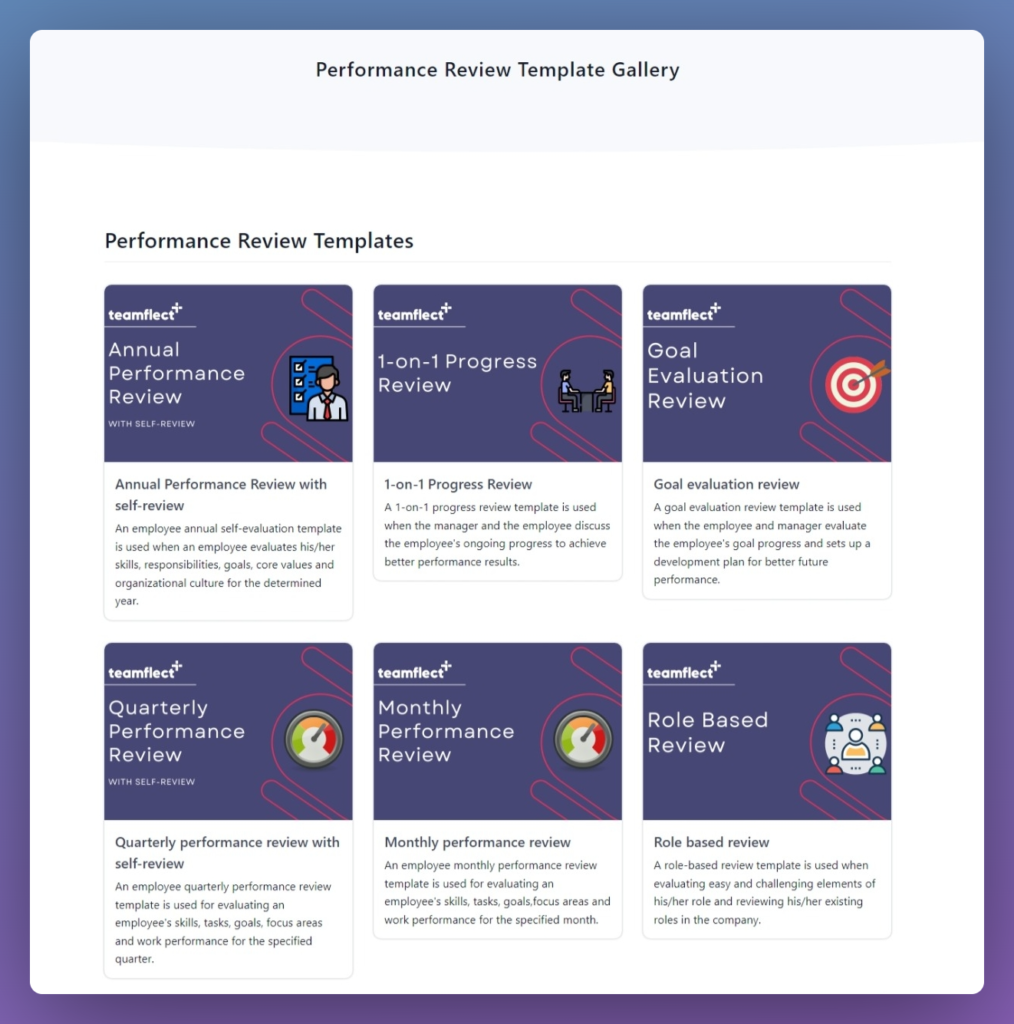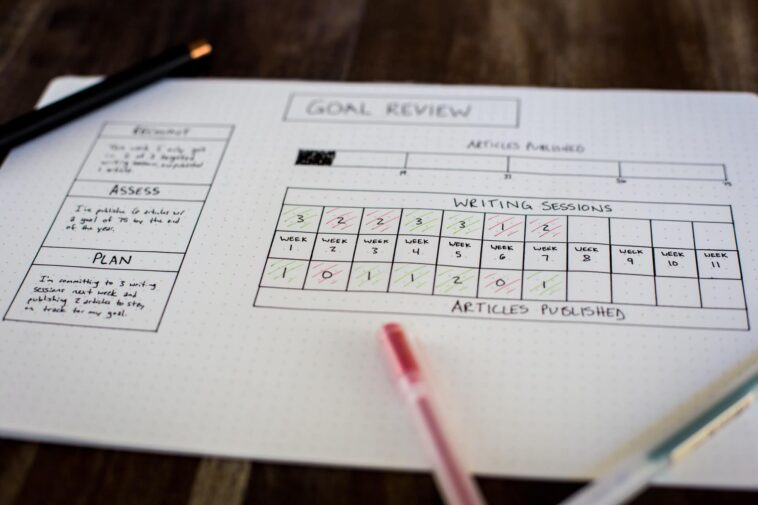Performance reviews are often the most dreaded and least anticipated part of a year for many employees. But if done correctly, they can also be valuable opportunities for both managers and their reports to reflect on their work together, discuss what went well, and brainstorm on what needs improvement in the future. Here are 20 performance review best practices to consider when reviewing performance in your company and with your employees!
Table of Contents
What is a Performance Review?
A performance review or performance appraisal is a formal process undertaken by an employer to assess the work of an employee and offer feedback in order to improve future performance. More companies are moving toward a frequent feedback performance management system in which managers conduct quarterly, monthly, and weekly reviews.
Performance reviews can provide valuable feedback for employees about their work and help them understand how well they are doing and what areas need improvement. Managers who conduct regular performance reviews can recognize high-performing employees, address issues before they escalate into problems—and better engage their team as a result.
Each organization has its own, unique way of conducting performance evaluations. That being said, there are some universal performance appraisal best practices that serve leaders who adhere to them well. Here are the 20 best performance review practices that can boost productivity within a working environment.
20 Best Practices for Performance Review
You can follow the performance reviews best practices below to improve your performance review template!
- Include KPIs In Objectives: Among performance review process best practices, having a KPI is critical. Make sure you include key performance indicators (KPIs) in your objectives so that you can measure yourself and ensure that you’re delivering what is expected of you. An objective without a KPI is like life without an aim—meaningless. If your objectives are not specific and measurable, they can be easy to overlook or skip over, meaning that your performance reviews might not be as effective as they could be.
- Keep It Short, Honest, and Informal: Don’t be long-winded during your performance review; keep it to the point. A performance review is an opportunity for managers to inform employees about how they are doing in their role and what improvements can be made —so it should be concise and effective.
- Be Timely: If you’re planning to write a review of some sort, consider posting it on or around performance review season—or just before payday, when people are thinking about how much money they’ll make for their following performance review.
- Have Clear Check-In Points: One of the best performance review ideas is well-defined checkpoints which provide employees with clear direction and help them stay on track. Create these check-in points with three objectives in mind:
- getting quick feedback from your employees on their progress
- giving them guidance and support where necessary
- providing regular assessments of their growth
- Document Everything: If you want to improve your performance review process, it’s a clever idea to document everything. This will give you insights into what is working and what isn’t and help ensure that you don’t make any significant changes without assessing their impact first. Try keeping track of each step in your performance-review process, along with all relevant documents (performance review templates, performance-review guidelines, etc.), and take note of anything that might be improved.
- Develop Mutually Beneficial Reviews: Develop mutually beneficial reviews by asking questions like: What can I do as a manager to help employees be more successful? That way, performance reviews aren’t just another to-do on your list of managerial duties; they are an opportunity for you and your direct reports to learn about each other. When you take an active role in meeting each other’s needs, you build trust—and trust is essential when working with people from different departments.
- Do Regular, Informal Check-Ins: Formal check-ins don’t allow you to have an informal conversation with your team. Instead, you may try to have a one-on-one meeting with each member of your team —at least once every two weeks or once a month if it’s a larger group. These casual conversations can help you identify trouble spots and areas for improvement, congratulate employees on their successes, and address any issues they might be having that aren’t necessarily performance related.
- Use The 360 Degree Review Process: While a formal performance review has burned many organizations, there’s no denying that 360-degree reviews can be powerful tools for fostering better communication. A 360-degree review is often carried out through performance review software and gives managers and employees more points of view and a deeper understanding of each other’s strengths and weaknesses.
- Provide Action Plans at The End of Each Objective: While your employees are working on their performance reviews, you should make sure they understand how they will succeed in each objective. To do this, provide an action plan for each goal listed in the review and discuss solutions together as a team. Set measurable, specific, and relevant goals for each objective, and detail what will happen if your employees don’t meet these objectives or deadlines.
- Take Time to Celebrate Success: A well-written performance review should be able to handle most situations—but there are a few pitfalls you should avoid. One of them is ensuring that your writing doesn’t include negative feedback or criticism.
It doesn’t matter if your criticisms are fair; it is unprofessional and damaging to praise people for their shortcomings. Instead, to achieve the best performance review process, be honest about employees’ strengths but tactful when addressing weaknesses—and use that opportunity to reinforce the necessary skills and drive them toward a promotion.
- Revisit Last Performance Appraisal: This is one of the simplest performance reviews best practices that often go unnoticed. Make a note of how far you’ve reached the goals you established at your previous appraisal. Did you receive the coaching or training that you had hoped to receive? Have your performance metrics improved? Have you taken on a leadership position inside the company? Also, if you did not achieve your goal, be prepared to explain why.
- Make Long-Term and Short-Term Goals: One of the most significant points of your performance evaluation is your objectives. Not only will this help you answer questions about what you have accomplished at work, but it’s also a good opportunity for self-reflection: looking back on how well or poorly you did in accomplishing those goals. Besides that, you can make sure that your career is on track by setting goals and achieving them.
- Make Sure That You Are Always Updated: Another tip for getting a satisfactory performance evaluation is to stay on top of your field. It is important for your boss to know that you take an interest in growing as a professional and learning new skills will help show this dedication. To be well prepared for your appraisal talk, consider becoming certified or at least beginning to study.
- Keep An Eye on Achievements Throughout the Year: Consider documenting your successes so that you can remember them later and refer to them. This is an excellent performance review best practice for leaders who want to stay on their toes! Even tiny accomplishments are worth remembering because they show progress toward larger goals.
- Frame Performance Reviews As an Opportunity to Grow: Performance reviews might be construed as an effort to improve a company’s financial success, and this conception might negatively affect employee engagement. It’s understandable because they want to be part of an endeavor that is focused on them as well. They are not dedicating so much time and effort only to their company’s financial success. For that reason, as one of the best practices for performance reviews, you need to eliminate this perception so that the employees can feel like their efforts will result in the improvement of their skills too.
- Make Sure That Your Evaluation Criteria is Transparent: One of the performance review best practices include establishing trust between you and employees. To build trust within a working environment you need to be as transparent as possible. And this transparency stems from having standard criteria that you can share with anyone. Employees might deem your evaluation questionable if you use different criteria for each individual.
- Increase Alignment with Company Goals: According to the research by LSA Global, employees need to be aligned with the vision. Within the scope of their research, they reached 410 companies and as alignment increases their revenue grows 58% faster and they are 72% more profitable compared to their competitors. So, for best performance reviews, you should aim to discuss the vision of the organization as well. When employees feel like they are working for a company that shares the same goals as them they will be more motivated to work.
- Avoid Performance Review Biases: One of the performance evaluation best practices is without a doubt eliminating errors such as biases. You should avoid performance review biases since biased reviews at work can negatively affect employee performance. When people feel that they are undervalued, they might not be so eager to be productive at work.
- Start Your Evaluation With Strengths: To establish a comfortable environment and ensure that employees feel appreciated, you should start your performance appraisals with their strengths. This practice will significantly affect the tone of the conversation between you and the employees. It can also motivate the employees which will increase productivity in the long run. Also, employees will be more confident when they hear constructive criticism after hearing about the positive aspects of their work. Starting with positive feedback will give the impression that the company is focused on development instead of criticism.
- Always Hold the Right Mindset: This is unquestionably the most critical piece of performance evaluation advice you will ever get. Now is a chance for your boss to give you candid feedback, so please try not to be offended. It is an opportunity for growth as well as clarification about how the company expects its employees to conduct themselves at work. Remember performance evaluations are meant to help you—not hurt you. Approach your evaluation with an open mind and try to thoroughly see what can be learned from both positive and negative comments.
Why are Performance Reviews Important for Companies?
Performance reviews are one of the most important and lasting business practices, and they are only going to become more significant as companies demand greater accountability from their employees. Here are the top benefits you can gain from employee evaluations. You may be surprised by what they could do for your business! Let’s dive right into the importance of performance appraisals!

To Improve Performance
According to a global survey of corporations conducted by research and consultancy firm Gartner, employee performance is 10% poorer in companies that do not give importance to evaluations. The absence of frequent feedback and recognition harmed high-performing staff the most, resulting in a 28 percent decrease in output.
Each team member’s efforts are critical to the success of your company. Reviews assist in clarifying or setting organizational goals and expectations and serve as a baseline for detecting when an employee’s performance deteriorates. You may then engage with your staff to develop solutions, such as more training or assistance or redefining responsibilities.
To Spot Talent
Performance assessments are an excellent approach to spot and develop your potential. They provide you an idea of how your employees are progressing in terms of their abilities, knowledge, initiative, and commitment to the company’s mission. You can examine a person’s employment history to see whether they are prepared for taking on more responsibilities or require more training to address any skill gaps.
These performance review phrases allow you to fine-tune a career path inside the organization that best utilizes their abilities and interests. Your employees will be more involved in the firm, and by promoting from within, the company will maintain all of its organizational expertise.
To Encourage Engagement
Employees, particularly top achievers, get disillusioned in the absence of performance appraisals, according to the Gartner study. The review process allows for crucial talks with workers, such as providing frequent feedback and encouragement, highlighting what is essential, and ensuring they have all the tools, skills, and information they need to accomplish their jobs properly.
Types Of Performance Reviews
Performance reviews are important, but they can be tricky to navigate. “What are the types of performance reviews?” you ask. This section will help you understand the differences between each type of employee performance review so that you can choose which one best suits your team’s needs!
The 360 Review
A 360-degree review includes input from peers, direct reports, and managers. The goal of this approach is to get a broad perspective on the employees’ performance so you can gauge their potential more accurately. 360-degree reviews, also known as multi-rater feedback, are usually conducted once every few years, rather than annually.
Monthly Performance Review
A monthly performance review is a great way to keep track of what is happening in your business. Monthly performance reviews give supervisors a chance to check in with each of their employees, make sure they know how their work is affecting the business, and learn what they need to do better next month.
With this type of performance review, everyone will know what is expected of them and how to improve their performance every month!
Checklist Performance Review
During Checklist Performance Review, an employee completes a self-assessment, and a supervisor independently fills out an evaluation based on that information.
After the self-assessment process, the two sides meet to discuss their reviews and resolve any differences in the performance review template. This type of process is most common in larger companies or those with formalized performance-management procedures.
Peer Review
Many companies perform peer reviews, which involve employees in the same department offering their opinions on how you can improve your job performance. These sessions typically happen in addition to standard performance review sessions.
These meetings may not be directly tied to your compensation, but they can help you receive valuable feedback from co-workers. Before the meeting, prepare a list of strengths and weaknesses so that in the event it turns out to be more of an evaluation than anything else—you will have something prepared.

Employee Exit Review
Employee exit reviews help companies to understand why an employee leaves and how they can avoid that in the future.
When an employee leaves the company, it is a great time to evaluate how well your company culture is serving employees. The exit interview gives you an opportunity to understand why that person left and what they loved about their time at the company—as well as ways in which you can support those values going forward in future hires.
Goal Evaluation Review
A goal evaluation review helps employees find out how well they have been achieving their goals and make adjustments if necessary. During the performance review, employees and their managers can discuss how well they have met the goals set—and what they can do to improve in areas where progress has not been satisfactory.
Performance Review Examples with Templates
Choosing the right one of the many different types of performance appraisals can be challenging. Even if you decide on the type of performance evaluation review, it takes expertise to frame the right elements so they can be evaluated in the most effective way possible.
Performance review software is frequently preferred to manage such a dynamic flow professionally.
If you want to use one or more of the performance appraisal examples above but don’t know where to start, check out our Performance Review Template Gallery!

Closing Words
We here at Teamflect are strong believers in the power of effective performance reviews. We structured massive amounts of our software to make sure our users get the most out of every single performance review they conduct. Whether you are conducting 360 performance reviews or coming up with new and improved performance review phrases, we have you covered. If you haven’t already, you can schedule a free demo with Teamflect by clicking right here!




